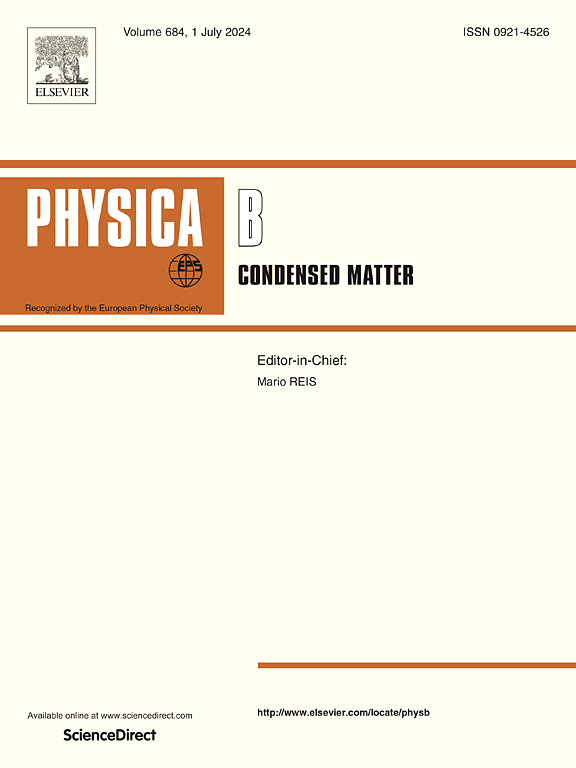Effect of 3 MeV proton ion irradiation on optical properties of Se70Te20Sn10 thin films for photonic applications
IF 2.8
3区 物理与天体物理
Q2 PHYSICS, CONDENSED MATTER
引用次数: 0
Abstract
The influence of proton irradiation on the optical, dielectric, and structural characteristics of Se₇₀Te₂₀Sn₁₀ thin films was systematically examined. These films were fabricated using electron-beam evaporation and subsequently 3 MeV proton irradiation at fluence levels ranging from 5 × 1013 to 5 × 1016 ions/cm2. X-ray diffraction analysis confirmed the amorphous nature of the films, while UV–Vis–NIR spectroscopy demonstrated a modifiable optical band gap that decreased from 1.84 eV to 1.61 eV with increasing fluence, followed by partial recovery at higher doses. The dielectric constant showed significant enhancement, peaking at 5 × 1013 ions/cm2, and recovering at 5 × 1016 ions/cm2, suggesting structural reorganization within the material. Surface morphology investigations using AFM revealed increased roughness parameters, such as SA and SQ, with fluence, which were closely linked to trends observed in the optical and dielectric properties. These findings underscore the suitability of Se₇₀Te₂₀Sn₁₀ thin films for radiation-resistant photonic and optoelectronic technologies, with the fluence-dependent recovery offering valuable insights into defect dynamics and the material's robustness under irradiation.
求助全文
约1分钟内获得全文
求助全文
来源期刊

Physica B-condensed Matter
物理-物理:凝聚态物理
CiteScore
4.90
自引率
7.10%
发文量
703
审稿时长
44 days
期刊介绍:
Physica B: Condensed Matter comprises all condensed matter and material physics that involve theoretical, computational and experimental work.
Papers should contain further developments and a proper discussion on the physics of experimental or theoretical results in one of the following areas:
-Magnetism
-Materials physics
-Nanostructures and nanomaterials
-Optics and optical materials
-Quantum materials
-Semiconductors
-Strongly correlated systems
-Superconductivity
-Surfaces and interfaces
 求助内容:
求助内容: 应助结果提醒方式:
应助结果提醒方式:


